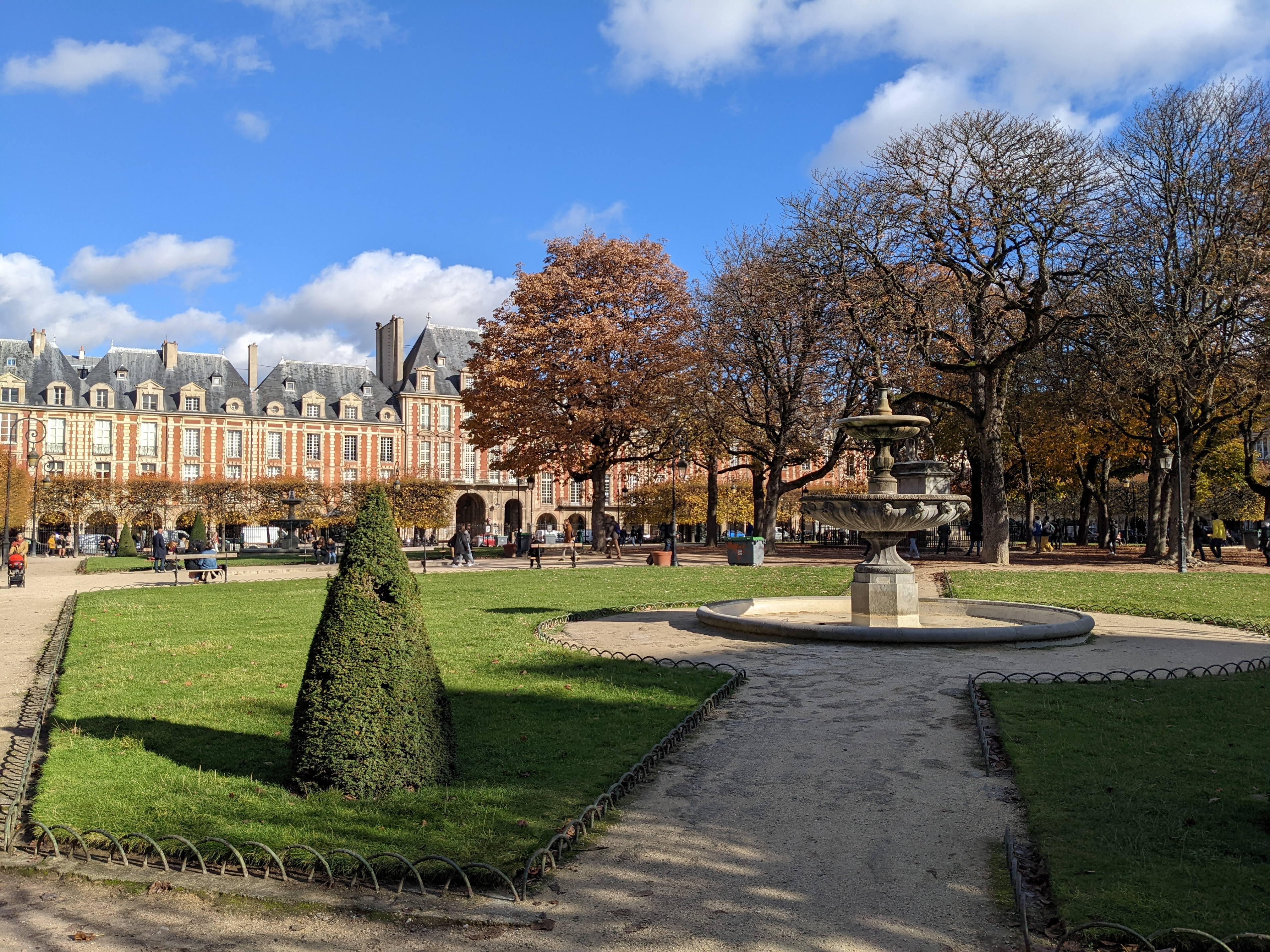Place des Vosges: A Parisian Oasis of History and Elegance
In the heart of Paris, amidst the bustling streets and towering buildings, a tranquil square can be found that seems to have been plucked from a different era. The Place des Vosges, with its harmonious architecture and lush gardens, serves as a testament to the city's rich history and enduring beauty. This remarkable space invites visitors to step back in time and experience the grandeur of 17th-century Paris.

A Royal Legacy
The Place des Vosges was conceived in the early 17th century under the reign of King Henry IV. Originally named Place Royale, it was designed to be a symbol of royal power and urban planning. The square's creation was commissioned in 1605 and completed in 1612, making it the oldest planned square in Paris.
The square's architectural uniformity is immediately striking. Thirty-six identical pavilions, constructed of red brick with stone quoins and steep slate roofs, are arranged symmetrically around the perimeter. These buildings were once home to French nobility and have housed many notable figures throughout history, including Victor Hugo, whose former residence has been transformed into a museum.
Things to do in Epinal
A Green Haven
At the center of the square, a verdant garden beckons visitors to relax and unwind. Perfectly manicured lawns, surrounded by neatly trimmed trees, provide a peaceful retreat from the urban environment. Four fountains, one at each corner of the garden, add a soothing ambiance with their gentle cascades.
The garden is divided into quadrants by gravel paths, inviting leisurely strolls. Benches are strategically placed throughout, offering spots for quiet contemplation or people-watching. On sunny days, the lawns are dotted with Parisians and tourists alike, enjoying picnics or simply basking in the serene atmosphere.
Architectural Marvels
The arcade that runs along the ground floor of the pavilions is another remarkable feature of the Place des Vosges. These vaulted walkways provide shelter from the elements and house an array of art galleries, cafes, and boutiques. The interplay of light and shadow created by the arcade adds to the square's romantic ambiance.
At the center of the southern and northern sides of the square, two larger pavilions can be found. These were originally intended as royal residences, though they were never used as such. Today, the Pavillon du Roi (King's Pavilion) and the Pavillon de la Reine (Queen's Pavilion) stand as grand focal points, their facades adorned with more elaborate decorations than their neighbors.
A Cultural Hub
The Place des Vosges has long been a gathering place for artists, writers, and intellectuals. Its beauty has inspired countless works of art and literature over the centuries. Today, the square continues to be a cultural hotspot, with numerous galleries showcasing contemporary art within the historic arcades.
The Maison de Victor Hugo, located at No. 6 Place des Vosges, offers visitors a glimpse into the life of one of France's most celebrated authors. The museum is housed in the apartment where Hugo lived from 1832 to 1848, and features exhibits on his life, work, and political involvement.
A Timeless Attraction
Despite the passage of centuries, the Place des Vosges remains a beloved destination for both Parisians and visitors. Its timeless beauty and tranquil atmosphere provide a welcome respite from the hustle and bustle of modern city life. Whether one comes to admire the architecture, relax in the gardens, or explore the surrounding galleries and cafes, the Place des Vosges offers a uniquely Parisian experience.
As the day draws to a close and the warm glow of sunset bathes the square in golden light, the true magic of the Place des Vosges is revealed. The red brick facades take on a rich, burnished hue, and long shadows stretch across the gardens, creating an enchanting interplay of light and color. It's in these moments that one can truly appreciate why this square has captivated hearts for over four centuries.
For those seeking to further explore Paris's architectural wonders, a visit to the nearby Sainte-Chapelle is highly recommended. This Gothic masterpiece, with its stunning stained glass windows, offers another glimpse into the city's rich historical tapestry.

 Home
Home Wishlist
Wishlist